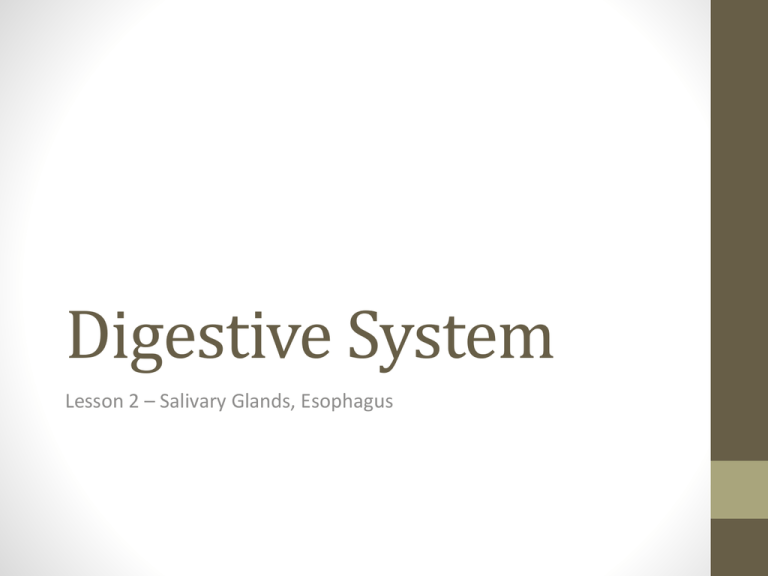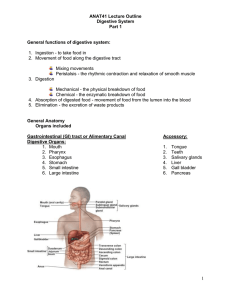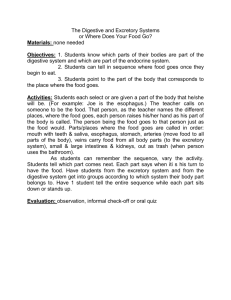Digestive System Lesson 2
advertisement

Digestive System Lesson 2 – Salivary Glands, Esophagus Key Words • Salivary glands: glands in the mouth that make a liquid called saliva • Saliva: a liquid made by salivary glands that moisten and soften food • Esophagus: a tube leading from the mouth to stomach • Peristalsis: the action of the muscle in the esophagus pushing food down to the stomach • Reverse peristalsis: the action of the muscle in the esophagus working backwards when stomach rejects food or liquid • Hypothesis: a scientific guess based or what you know Objectives: • You will be able to name the parts and function of the digestive system • You will use and understand the scientific process for groups experiments Review • Let’s review what we know about taste buds. • What do taste buds do? • What are the 5 different tastes we can detect? • What is the first part of the digestive system? What happens to your food? • What happens to your food when you put it in your mouth? • What happens to your food when you chew it? Experiment • Before scientists perform and experiment they form a hypothesis ( a guess based on what we know already). • A hypothesis is not always correct. • They are learning tools used to guide us Experiment 1 • We will be making a hypothesis about what happens to out food. Go over the experiment recording sheet. • You will all receive a soda cracker. You will take one bite of the cracker and chew it slowly, and then hold it in your mouth. What do you think will happen to the cracker? Write your hypothesis/ prediction for experiment 1 Experiment Write down what you have learned from experiment 1. What observations did you make? Experiment 2 • You will all receive another soda cracker. You lie down on the floor on your side. You will take one bite of the cracker and chew it slowly, hold it in your mouth, the swallow. What do you think will happen to the cracker? Write your hypothesis/ prediction for experiment 2 Experiment Write down what you have learned from experiment 2. What observations did you make? The muscle is called Your food was did notperistalsis. stay in your When you itget sickpushed the muscle esophagus, was downwill by work reversetotoyour cause vomiting. the in muscles stomach. This is called reverse peristalsis. So, now where did your food travel? Where might it go next? Experiment Use the digestive system diagram and color in the two steps for the digestive system. Your teacher will collect them and your experiment sheets for later use.




